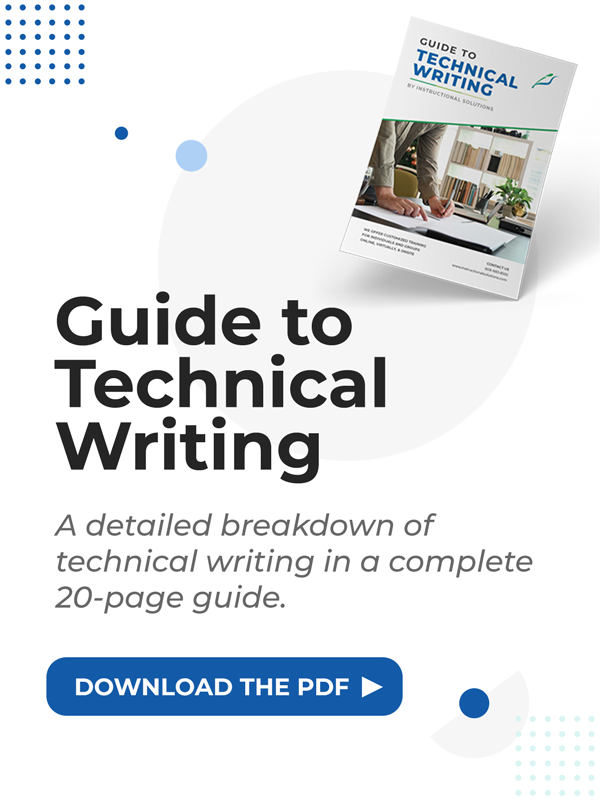January is often the month that performance metrics are determined for the year. Whether writing an annual review or quarterly job performance review, there are two sides to consider when writing a performance evaluation:
- Presenting your information for evaluation - the work of the employee.
- Evaluating performance - the work of the manager.
Tips for Employees to Present Information to Receive a Strong Performance Evaluation
Despite its apparent complexities, writing performance appraisals is a fairly easy task. Here’s a look at four business writing training guidelines to help both managers and individual employees write relevant and accurate performance appraisal reports.
Keep the Audience in Mind
Appraisal reports are written for senior management in your organization. Put yourself in your manager’s position and consider: What does your boss want in this appraisal report? What good will this information do for him or her? How will the report help in assessing the employee’s performance?
The first step towards drafting an effective performance review is to keep your target audience in mind. There’s a famous business cliché that says, “What counts is what's counted.” This should be your focus. Analyze all indices and factors that seem relevant for the employee appraisal.
Remember, your manager will evaluate your performance based on your job description and goals. Be certain to include specific information about your job description and annual goals since that is the primary measure your manager will use.
Stay Relevant
As an employee, you need to address all the core areas of interest to your manager on a timely basis. The core interest will always be your job description and annual goals. Address your achievements about your specific job description and goals before introducing any ancillary work you achieved.
For example, if your position is an accounting manager and your primary job description is reviewing the finances for specific deals and your annual goals include 90% accuracy in deal forecasting. Do not focus most of your performance evaluation document on the wonderful new software program you developed for your team. While that software program is commendable, you must give your manager achievements directly related to your job description and annual performance goals.
Keep Track of All Achievements
By the time January rolls around, you’ve likely forgotten about the training course you took in August or the email you received in February that raved about your work.
Create a tracking document that lists all your achievements and completed development opportunities as they occur. These achievements should be in line with the performance indices used in your appraisal report. Whenever you receive any recognition email or acknowledgment for your hard work, add it to your tracking document and save the email. Note any training you completed, conferences you attended, or any relevant innovations you created as they happen. This will provide accuracy and reliability to your performance appraisal report and help you assemble accurate, relevant facts.
Pro Tip: Keep a log of your colleagues' achievements if your company conducts a 360-degree review.
Use Specific, Measurable, Confident Language
Performance appraisal reports are very specific in nature. They determine increments to your salary, bonuses, perks, or even a better position. Therefore, it is important that you use the right tone, with accurate sentences and specific verbs to describe your performance.
Use evocative words that specifically summarize your achievements. Instead of relying on long and unending sentences, use short and precise words and phrases. Avoid jargon and business clichés that don't really mean anything specific, such as "passionate marketer" or "committed team member." Instead, be specific about your actual accomplishments.
Tools such as Jargon Grader will help you will receive helpful feedback that allows you to weed beaten-to-death phrases from your writing and Grammarly will identify any basic errors.
Choose one strong evocative verb, instead of verbs that need modifiers, when summarizing your work.
- Instead of “worked on cost of living impact to hiring,” be more specific. “I calculated the cost of living on hiring success.”
- Instead of "He walked slowly into the room, late as usual," write, "He slinked into the room."
- Instead of "We held a meeting to discuss," write, "We debated the issue."
When selecting what to highlight, review your SMART Goals to ensure your achievements specifically align with past performance review goals.
Tips for Employers
It is critical to link the business goals of the employee's key work to specific attributes in a performance review to accurately measure employee performance.
Let’s apply this to the important skill of business writing.
For this key particular skill, we need to link the business goals of the employee's key documents to specific writing attributes. Telling an employee that they need "better report writing" or "more clear email" is too vague and impossible to measure. Without accurate measurements in the performance evaluation, skill gains cannot be tracked.
Instead, approach it more strategically:
- Define the goals of the documents your employees need to write.
- Assess the sub-skills required for these documents.
- Evaluate if these identified sub-skills actually support the overall document goals.
Document Goals for Future Performance
What is the desired outcome for the employee's documents?
First, identify the key documents the employee needs to write and then assess the requisite skills for each major document. For example, if an employee needs to write spec documents for vendors, the end goal of these spec documents is likely to receive vendor RFPs that accurately respond with solutions that match your company's specs and needs. Or, if employees need to write reports on the status of critical company equipment, the end goal of these status reports is likely to keep your executive team informed about key equipment or perhaps request funding for needed repairs.
As you consider each employee's individual performance, it's important to ensure that your employee feedback aligns with the key performance indicators of growth for each department.
The first task in crafting employee business writing goals is defining the real business purpose of each document. Don't move immediately to syntax and language, which is a very common mistake.
Performance Review Examples for Writing Skills
Every business document requires five core requisite skills:
- Audience awareness
- Appropriate content
- Content logically organized
- Content logically sequenced
- Syntax and grammar that is clear, correct, and engaging
Let's apply these requisite skills to the employee who needs to write spec documents:
- Sub-skill = audience awareness - Do the spec documents accurately address an identified reader (i.e. the employee understands when a vendor is unfamiliar, familiar, interested, disinterested, experienced, or less experienced)? In essence, the employee is able to critically assess both the project and the vendor's current understanding.
- Sub-skill = appropriate content - Do the spec documents provide complete yet non-redundant information, based on vendor needs? For example, a vendor who has never worked with your company likely needs more background information than a vendor who has successfully completed a similar project before.
- Sub-skill = logical organization - Are the spec documents logically organized? Is the information logically grouped, and tiered? Can the vendor visually identify significant information and delineate what is essential from background information?
- Sub-skill = logical sequencing - Do the spec documents start at an orienting summary, move logically through the information, and close clearly and logically?
- Sub-skill = language and syntax and format - Is the grammar correct in the spec documents? Is the language clear? Is the tone professional and well-matched to your company and vendor? Is the document easy to skim and absorb for busy readers?
This same process can be applied to customer service emails, quarterly performance reports, business justification documents, or any key documents you or your employees write.
The first objective is to identify the desired business outcome of key documents, and then break down the requisite skills into measurable components.
Do the Identified Writing Skills Support Document Goals?
Goals must be linked to document outcome, with the skills broken down. Otherwise, there is no real way to measure progress or identify skill gaps to track and measure employee writing skills in a performance evaluation.
Without the skill gaps clearly identified, any performance management, training, mentoring, or writing evaluation will be hit or miss.





